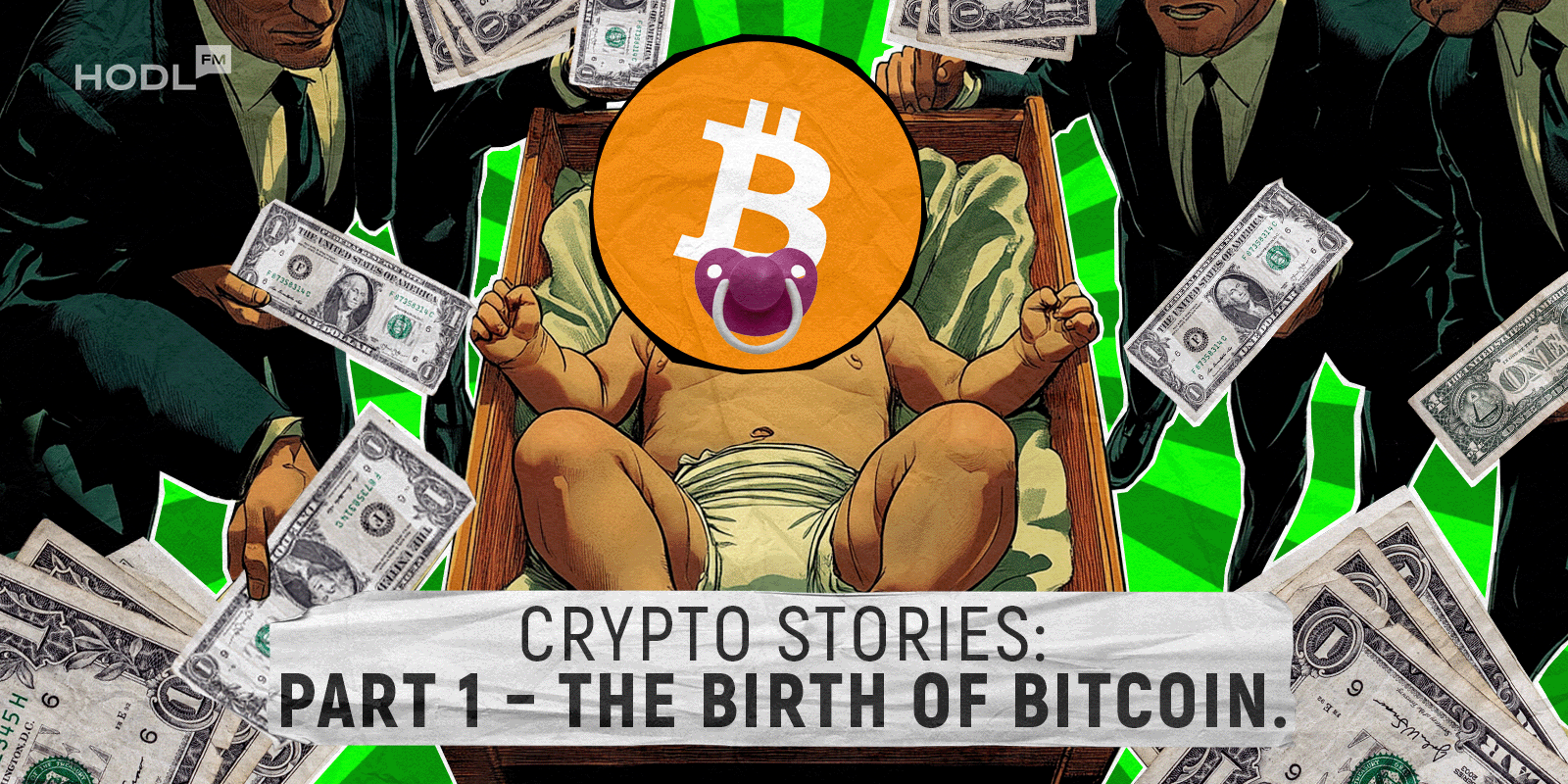Fans of Apple worship Steve Jobs, Tesla enthusiasts kneel before Elon Musk, "Game of Thrones" devotees revere George R.R. Martin, and Bitcoin fans exalt Satoshi Nakamoto as the visionary behind the blockchain Gospel — the Bitcoin whitepaper.
The Mystery of Satoshi Nakamoto
Several people have either claimed to be Nakamoto or had the title thrust upon them by the media. Let’s meet a few of the most “likely” candidates:
- Dorian Nakamoto: This Californian scientist and engineer became an unlikely Bitcoin poster boy in March 2014, when Leah McGrath Goodman of Newsweek dubbed him the creator of Bitcoin. Dorian categorically denied it.
- Hal Finney: An early Bitcoin enthusiast, Finney was the first to receive Bitcoin in a transaction, leading some to speculate he was Satoshi himself. Coincidentally, he lived only a few blocks away from Dorian Nakamoto, who the media speculated may have been the inspiration for the pseudonym.
- Nick Szabo: In 2005, Szabo posted a blog hypothesizing a digital currency called "Bitgold," which would bypass third-party trust. While this sounded very Bitcoin-ish, Szabo ultimately didn’t match up to Satoshi standards, despite fan theories.
- Craig Wright: The self-nominated Satoshi. Wright has repeatedly claimed he is the man behind the myth, sparking numerous lawsuits in a bid to claim intellectual rights. However, his attempts have been thoroughly debunked.
The world is better off not knowing who Satoshi Nakamoto was.
— Anthony Pompliano 🌪 (@APompliano) October 6, 2024
Most recently, in February 2024, the Crypto Open Patent Alliance took him to court over his dubious assertions. The judge ruled that Wright was not Nakamoto, dismissing his claims as lacking substance.
Since Satoshi decided to remain anonymous, it’s impossible to say whether a single person or a group vanished behind that name. As of October 2024, the true identity of Satoshi Nakamoto officially remains a mystery.
The release of the Bitcoin whitepaper in 2008
Sixteen long years ago, a still-unknown person, or perhaps a collective, using the alias Satoshi Nakamoto published ‘Bitcoin: A Peer-to-Peer Electronic Cash System’. This landmark document introduced the blockchain system underpinning the entire crypto market.
Satoshi’s vision was straightforward yet revolutionary: to enable anyone with internet access to make financial transactions free from banks, financial companies, and government oversight. Bitcoin went live in January 2009, marking the dawn of decentralized finance.
Bitcoin's Whitepaper Explained
The Bitcoin whitepaper outlines how a peer-to-peer network can address the “double-spending” issue inherent in digital currencies. While cryptocurrency concepts existed before Bitcoin, none solved this fundamental problem effectively. Bitcoin’s innovation lay in creating a system where digital assets, unlike physical currency, cannot be duplicated in multiple transactions.
In physical currency, a banknote or coin exists only in one place at any given moment, preventing duplicate spending. Digital assets, on the other hand, can exist in multiple locations at once, meaning a single digital token could be used more than once without the right safeguards — hence the "double-spending" problem.
Historically, to mitigate this, trusted third parties like banks acted as verifiers to ensure that digital assets were not reused in multiple transactions. While these intermediaries could manage the verification process effectively, they also introduced costs and increased the risk of fraud. Instances of failure or fraud made it clear that relying on human institutions for verification was imperfect.
Bitcoin’s solution was to eliminate human involvement through cryptographic verification and decentralized consensus, reducing the need for trust and allowing transactions to occur autonomously.
Of course, our friend Craig Wright, whom we mentioned earlier, insists that Bitcoin’s purpose was clearly laid out in Satoshi’s whitepaper. He cites a passage in the introduction that points out flaws in traditional finance — things like high transaction fees, minimum transfer requirements, and the lack of support for small, continuous payments. Wright interprets this as evidence that Bitcoin was designed to tackle these very issues, creating a digital payment system that’s cheaper, more accessible, and, let’s be honest, quite a bit cooler.
The purpose of Bitcoin was clearly stated. A system with high fees is one that " increases transaction costs, limiting the minimum practicable transaction size and cutting off the possibility of a small casual transactions".
— Dr Craig S Wright (@Dr_CSWright) January 27, 2024
I.e... The purpose Bitcoin was created to serve. pic.twitter.com/e6bAzTavQT
Decentralization and peer-to-peer networks
Traditional digital transaction systems rely on trusted third parties, like banks, to verify and authorize payments. While efficient, this setup adds extra costs, risks, and potential delays. It also creates a single point of failure and opens transactions to the influence of intermediaries.
Bitcoin addresses these issues by employing a decentralized, peer-to-peer network where each participant can independently verify transactions without central authorities. This approach removes the need to trust middlemen since every transaction is validated by a consensus mechanism involving multiple network nodes. Decentralization lowers costs, minimizes fraud risks, and ensures the network remains secure and operational without reliance on any one organization.
The Genesis Block
As we journey through the early days of Bitcoin, we’ve arrived at the legendary chapter of mining. In early 2009, Bitcoin’s software was released to the public for the first time, and Satoshi Nakamoto mined the very first 50 bitcoins, sparking the birth of crypto mining.
Back then, only a small circle of programmers and die-hard enthusiasts were involved in building what few of them could imagine would one day capture the world’s attention.
The most famous tale from this era is that of Laszlo Hanyecz, a software developer who bought two pizzas for a whopping 10,000 bitcoins. But Laszlo has no regrets; he sees it as an important moment in establishing the growth of the crypto ecosystem (though those pizzas are now legendary as the priciest ever!).
Today is #BitcoinPizza Day! 🎉
— Bitcoin Pizza 🍕 (@bitcoin_pizza) May 22, 2023
Then there was developer Gavin Andresen, who bought 10,000 bitcoins for $50 and set up a site called Bitcoin Faucet, where he literally gave bitcoins away just for fun. People could solve a simple captcha to get 5 BTC every day.
The embedded message in the Genesis Block
The genesis block is the very first block of any blockchain, and it's usually hardcoded into its software. What makes it special is that it’s the only block in the blockchain that doesn’t reference a previous block, and in almost all cases, the initial mining rewards it unlocks are left unspent.
Since Genesis blocks form the foundation of their respective blockchains, they often contain intriguing stories or hidden messages. Bitcoin is no exception! In its inaugural block, Satoshi included a reward of 50 BTC and the message: “The Times 03/Jan/2009 Chancellor on brink of second bailout for banks.”
Satoshi Nakamoto embedded a message in Bitcoin's Genesis Block
by u/CryptoIsThePlan in CryptoCurrency
This clever nod references a Times’ article discussing the financial crisis of that era, which many believe was the catalyst for creating cryptocurrencies in the first place.
The First Bitcoin Wallet
There’s no official Bitcoin wallet in the same way you might find for other cryptocurrencies. Since Bitcoin is a decentralized system, it doesn’t have a single governing body crafting and maintaining official software.
Instead, we have Bitcoin Core, an open-source desktop application created by Satoshi Nakamoto and a team of developers. Bitcoin Core is often dubbed the "official" wallet for several reasons:
Control Over Your Funds
This wallet gives you complete control over your bitcoins. That means no one can freeze your account or make off with your money! But, with great power comes great responsibility — you’re solely in charge of securing and backing up your wallet.
Full Verification
Bitcoin Core acts as a full node, meaning it independently verifies and relays transactions across the Bitcoin network. It doesn’t rely on third parties to validate payments. Full nodes are crucial for ensuring the highest level of security and protecting the network.
Total Transparency
The wallet’s source code is publicly available, and the compilation process is deterministic. This means any developer in the world can audit the code and verify that there are no hidden surprises lurking in the executable.
Vulnerable Execution Environment
This wallet can be installed on computers that might be at risk for malware attacks. But fear not! By beefing up your computer's security with strong passwords, moving the bulk of your funds to offline storage, or enabling two-factor authentication, you can make it much harder for anyone to swipe your bitcoins.
Enhanced Privacy
Keeps Your Payments Under Wraps: This wallet makes it tough for prying eyes to track your balances and transactions by rotating the addresses you use. You should create a new Bitcoin address each time you request a payment.
Prevents Information Disclosure: When sending or receiving payments, this wallet doesn’t leak transaction information to other nodes in the network, keeping your business your business.
Tor-Friendly: Bitcoin Core allows you to set up and use Tor as a proxy, making it harder for hackers or ISPs to link your payments back to your IP address.
Full Control Over Fees
You have the ultimate say over your transaction fees. The wallet lets you adjust the fee after sending funds using RBF (Replace-By-Fee) or CPFP (Child Pays for Parent). Plus, it offers fee recommendations based on the current network state to help you complete transactions in a timely manner without overpaying.
In essence, Bitcoin Core sets the gold standard for secure and private Bitcoin storage, providing users with complete independence and a high level of protection in a decentralized network.
Even after 16 years, the Bitcoin story is still ongoing, and who knows? We might just uncover the mystery of its creator and see Bitcoin soar to $500,000 in the coming years.

Disclaimer: All materials on this site are for informational purposes only. None of the material should be interpreted as investment advice. Please note that despite the nature of much of the material created and hosted on this website, HODL FM is not a financial reference resource and the opinions of authors and other contributors are their own and should not be taken as financial advice. If you require advice of this sort, HODL FM strongly recommends contacting a qualified industry professional.




